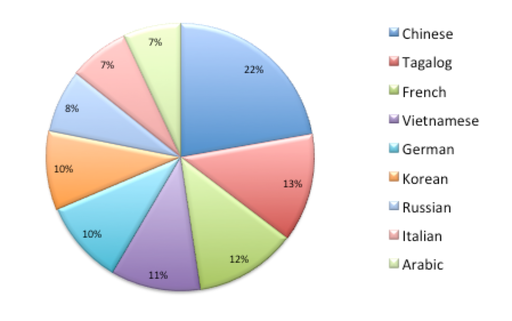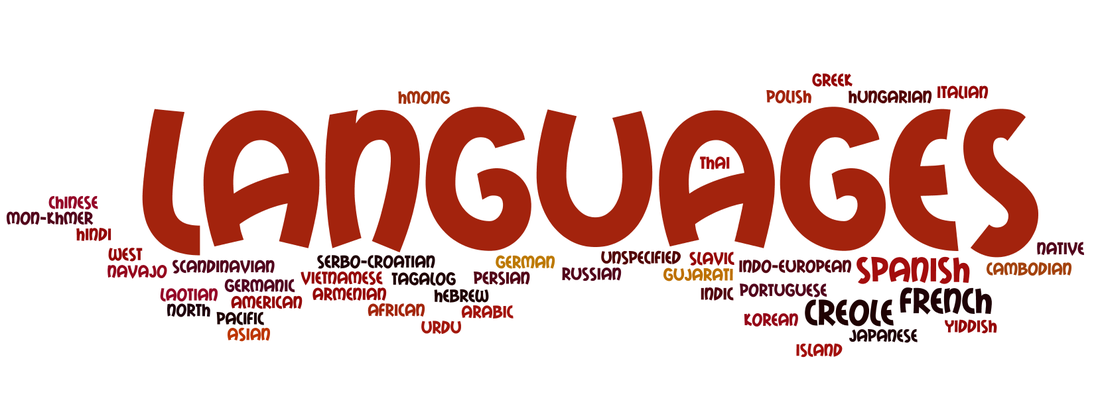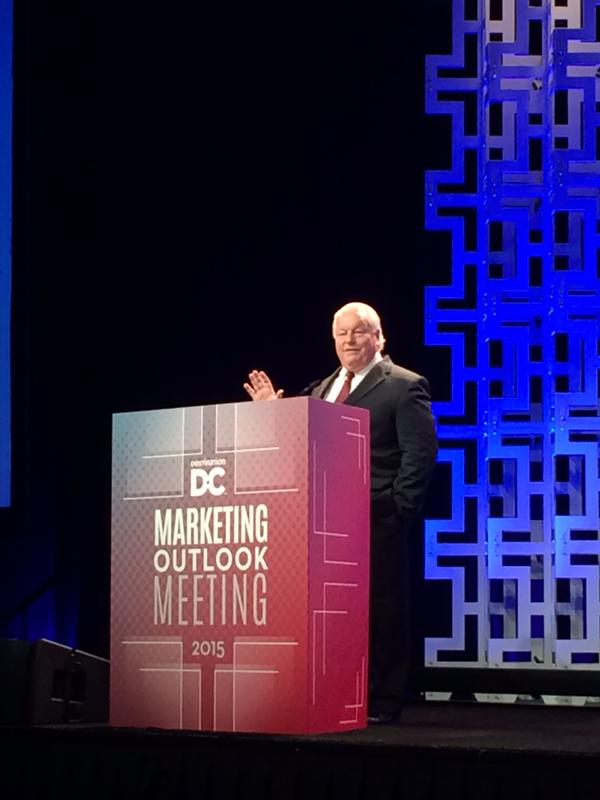|
Considering going global or expanding your global operations?
The U.S. government lists the top 15 countries for exports of goods.1 Canada tops the list, followed by Mexico and China. Current retail numbers show a likely softening of the U.S. market, so you'll want to pull out all the stops next year. This means localizing for niche markets within the U.S., and creating marketing campaigns for each local market outside the U.S. Tailor your message, translate product manuals and packaging, carefully consider color choices for websites and product packaging, and staff up so that you can answer customer questions in multiple languages. The more effort you make to reach out to customers in their own languages, the more likely your sales will take off. You may even need to do some language adjustment for English speaking countries. Some terms that you use might come across properly. For example, did you know that if you tell a group of U.K. business people that you want to table a matter, they'll think that means you want to discuss it right then? Be sure that the words you use mean the same thing overseas. And, as always, avoid translating humor. Either re-write it to suit the local market or leave it out altogether. Start your globalization process by researching potential markets; just 15 countries account for nearly 75% of all U.S. exports. In order, they are:
1. http://www.census.gov/foreign-trade/statistics/highlights/top/top1509yr.html
1 Comment
Most of our large cities have pockets of immigrants where English is rarely heard and local newspapers circulate in foreign languages. Increase your market penetration by advertising in the local language papers; translate your tv ads and your social media posts. And don't limit yourself to the hispanic population, many cities have large groups of Chinese, Tagalog, French, Vietnamese, Russian, and Arabic speakers as well.
Tis the season to send out mass emails to customers and prospects hoping to cash in on the holiday spending spirit. If your business is global, you need to give a little extra thought to your holiday missives. It may be fun to send a Thanksgiving greeting to your U.S. customers, but your European clients won't be celebrating the day and your message will fall flat. Likewise trying to woo your Asian customers with Christmas deals may not be the best strategy, but many overseas cultures do make a big deal out of New Year's. Your best option is to put together a calendar of your major markets and their holidays. What should be on it? China: Singles Day, November 11. A new holiday, begun in 1993, it is now one of China's largest shopping days, far eclipsing sales for U.S. holidays. Alibaba, the online Chinese retailer, pounced on Singles Day, and in 2012 doubled the revenue U.S. companies grossed from Cyber Monday. In 2013, Alibaba racked up $2 billion in sales in the first hour of the day. With that success, it's no wonder that Alibaba is hoping to export the holiday to the U.S. and Europe. China, Vietnam, Korea: Lunar New Year and National Day holidays, late January to February. Because this is a lunar calendar festival the dates move every year within this range. This is one of the largest shopping holidays for these countries. People buy clothing, food, and luxury items to give as gifts. In 2015, Chinese tourists to the U.K. spent an average of $1,100 per person on new year's gifts. In Vietnam, sales increase up to 50% just prior to the new year's celebrations. Keep in mind that many stores close for the holidays themselves, and most of the shopping happens in the days and weeks leading up to the big celebrations. If you are a B2C company, you won't want to miss out on this holiday. India: India's largest shopping holiday is Diwali. Another lunar calendar event, it can fall in October or November. Jewelry and cars are especially popular holiday gifts, as it is believed that buying expensive items can bring good luck. Some malls report a 20% increase in traffic during the holiday, with customers often spending most of a month's salary on gifts. U.K.: While the U.K. does participate in Cyber Monday, their other big shopping day is boxing day, the day after Christmas. In 2014 they spent £2.7 billion that day alone. France: In 2014, January 7th was the highest grossing shopping day of the year, with more than double the average day's sales. France was the only European country to have its best shopping day after the holiday season. Mexico: November 18th, El Buen Fin or the anniversary of Mexico's 1920 revolution is a major shopping extravaganza. A four day event, in 2014 it grossed $14 billion. This list of holidays should get you started on thinking about when your customers will be walking the malls and surfing the net for the best deals. Personalize your email and social media campaigns and tailor them to each market, and you'll have a happier and successful holiday season.  In honor of world statistics day, we thought we'd share some stats that show how important it is for U.S. businesses to translate their marketing and product materials and hire interpreters for events for domestic audiences. 55 million people in the U.S. speak a language other than English at home, close to 20% of the population. 62% of those 55 million people speak Spanish or Spanish Creole. Of the remaining 21.9 million people, 20%, or roughly 11 million of them speak 9 different languages. The balance of people, 10 million, speak 28 different languages (or derivatives of those languages.)
So the next time you tweet out to your followers or upload a video, think twice about just releasing it in English. There are a whole lot of people out there who may want what you're offering, if only you'd advertise it in their language. Source: 2006-2008 American Community Survey. Global market expansion usually means working with teams in the new countries. These international teams are integral to the success of your projects and your company, and team leaders need to adjust how they manage their people in order to meet their goals.
1. Choose a corporate language. Most companies agree to conduct business meetings in English, if there are teams collaborating from multiple countries. While team members may not be fluent in English, chances are that everyone will know enough to get by. However, because English is not everyone's native tongue, when teams are on conference calls, the native English speakers need to speak slowly and clearly so that the international teams have a greater chance of following along and understanding what is said. 2. Be sensitive to cultural differences. In some cultures, it is impolite to disagree in public, or to jump into a conversation without being recognized first, or to present ideas that are not fully thought through. If you are leading the meeting, make sure you ask for input from your quieter team members. Explain offline to your international teams what you expect during meetings. Do you do a lot of brainstorming? Do you want ideas to be challenged in the moment? Set guidelines for in-meeting behavior that everyone understands. 3. Expanding on the cultural differences issue, consider bringing in a cultural awareness coach to talk to your teams about the difference in cultural norms between countries, and other business etiquette issues that you and your teams may not be aware of. Undergoing some training in these areas can really boost camaraderie among globally dispersed teams and improve productivity as people gain an understanding of how others work and communicate. 3. If at all possible, send out an agenda the day before your meetings so that whichever time-zone your team members are in, they will have adequate time to prepare. For standing meetings, follow the same format from meeting to meeting so that everyone knows what to expect. In some cultures, employees need to confer with their local management before jumping on a conference call with their global team. Give them the time they need to be prepared. 4. Reiterate what is said on the call. Summarize others thoughts and check that you and the group understood properly. Send out a list of action items after the meeting, and recap conclusions that were reached. Invite participants to ask clarifying questions and to tell you if they didn't understand what was said. Work to create a culture where it's okay to ask someone to rephrase or re-explain their thought. 5. Spend some time at the beginning of each call connecting team members on a more personal level. Give team members a chance to talk about what they did over the weekend, or what they're planning to do. Ask about an upcoming holiday celebration. Even the weather will do in a pinch. If you can re-create a water cooler feeling for a couple of minutes, it will help your team bond. 6. Establish how team members prefer to communicate when not on a call. Tools like Slack can be extremely useful for keeping everyone up to date, but they can also resemble a fire hose. Gain agreement on what should be emailed, how fast you expect team members to respond to email, what should happen in online forums, and appropriate hours for phone calls. The more aware you are of cultural differences, the more social norms you create that cross country and cultural boundaries, and the more you work to connect team members on a personal level, the more productive your global team will be. Wouldn't you love to increase attendance at your conferences and trade shows? One way to do that is to reach out to the international community. Research shows that only 2 of 10 exhibition attendees are from other countries. By putting in place the right global strategy you can tap a whole new market. Join RABI CEO Yvette Fang for an informative webinar about how to increase international attendance at your trade shows and conferences. Yvette will walk you through:
What is Omni-channel localization?
It's localizing every step of the customer experience, from initial contact through post-purchase engagement. Every interaction with your customer should reflect your brand and your values, but also be readily understood and appealing in local markets. And while you may need to adjust your language, your tone, and your advertising channels from market to market, within each market you need to have consistency from first touchpoint to last. Start by charting the customer engagement process step-by-step for each market and then do your research. For every step, you need to discover how best to interact with the customers in that market. Customers in Germany engage with companies differently than those in Japan, so discover for each local market which mix of channels your customers prefer, whether it be phone surfing, word-of mouth, social media, etc. What tone do they expect when they receive email communications and how much are they willing to read? How much hand-holding do customers need in each market? Do they want to visit a physical store first to play with the product or are they willing to order directly online? Don't forget to think about live touch points as well. Call centers should be adequately staffed with people who speak the local language, phone prompts need to be localized, website chat options need native speakers, and social media channels should be chosen for their importance to that community and staffed, again, with native speakers. Every time your customer reaches out to you or you reach out to her, the experience should be consistent and personalized, from the basics, like only showing products on the localized websites that are actually offered in that market, to ensuring that the translated language has consistent terminology, to true two-way engagement that demonstrates that you understand your customer as well or better than your local competitors. RABI partners and our local D.C. team were pleased to attend the Destination D.C. marketing outlook 2015 event. Destination D.C. hosted more than 500 tourism, trade, and local business members for a look at how the tourism and convention business is set to grow in D. C. over the next few years. We met Destination D.C.'s President and CEO, Elliott Ferguson, who stopped by our table at the event. Great speakers and sessions made the event fun and informative. Some of the fascinating facts that we learned include:
The takeaway from the event? Huge growth in international tourism, especially millennials, represents a major opportunity for savvy companies. Successful businesses should provide support at their events for participants for whom English is not their first language, and they should also localize their marketing materials and social media posts to reach potential visitors in their languages via the marketing media that their audience consumes most. We can help you provide the best experience and outreach to your market. RABI offers a premier events solution to help plan and organize global events and international conferences and ensure seamless communication through advanced services and technologies. Services we offer include:
Visit redblueint.com/events.html for more information about our events solution and to download our case study, Simultaneous Interpretation: a Commercial Property Company.
So you're gearing up for a business trip overseas. You've activated an international calling plan, located your passport, and lined up your sales calls. Unfortunately, there just isn't time to learn the language. In most countries, the people you meet with will be able to speak English, but knowing some key phrases in their language will go a long way towards cementing an excellent working relationship. Here are some of the most helpful phrases to master before you go:
1. Hello/Goodbye/Please/Thank you. While perhaps these seem obvious, many people do not take the time to learn them before stepping off the plane. Just being able to say hello to the customer service rep at the hotel desk or thank you to the receptionist who takes your name when you arrive at the office for your meeting will go a long way toward creating a pleasant experience. 2. My name is... and What is your name? Being able to introduce yourself starts a conversation off on the right foot. 3. Where is the bathroom? You definitely don't want to be pantomiming this one, so get it mastered before you arrive. 4. May I have..... or I would like...Either of these phrases paired with a few common requests like water, beer, wine, sandwich, or napkin will enable you to navigate a restaurant. You can even start with "may I have" and then point to what you want on the menu if need be. Just by knowing the opening phrase, you'll seem more civilized and more in control at a business lunch or dinner. 5. Excuse me and I don't understand. At times, especially in larger meetings, you may find that the host group subsides into their own language. If you can interject with excuse me in their language, you'll get the conversation back on track politely. 6. Cheers! or another local toast phrase. Undoubtably, the host will want to take you out for dinner some night. Offer a toast to your host in his language. This lets him know that you appreciate his country and customs. 7. I'm looking for... This can be extremely useful for finding an office, a particular person, a souvenir, a place for lunch, your hotel, etc. 8. Numbers to 10 and How much does this cost? These will help you with paying the bill, buying presents for home, and understanding which floor to take the elevator to when you arrive at the office. The benefits to having a global team can be huge. You get different perspectives, you tap into expertise that might not be available near you, you can lower your costs, and work gets done while you're asleep. But along with the benefits, come the headaches. You need the team to meet but the Chinese office is closed, or you've requested your San Francisco office be on a 5 am call four times this week and they're starting to rebel. How do you keep your global team engaged, focused, on task, and keep the communication lines open while coping with everyone's schedules?
First. Establish a universal time zone for your team. This may seem simplistic, but it can save you a lot of aggravation. Be clear that when you say the meeting is at 4 pm, that means 4 pm Central Standard Time, and everyone can calculate what that means for their office. Without a standardized time zone, you're in danger of scheduling a meeting one day for 3 pm Pacific Time and the next day 10 am Eastern Time and pretty soon confusion will reign and people will miss meetings. It really doesn't matter what time you choose for universal time, as long as everyone knows what it is. Second. Make sure everyone on the team knows what time it is for everyone else. One easy way to do this is to enable Google calendar's world clock (under settings, labs). Or as we suggested in an earlier blog, use Time and Date's world clock that shows normal working, sleeping, and away from office times in an easy color coded chart. The point is to have an easy way to find out whether your team is available for the meeting you're trying to schedule. Third. Schedule a meeting a least once a week for the extended team. This ensures that everyone is really connected to the team, knows what's going on, and is clear about priorities. Encourage questions in these meetings, and try to use a video conference if at all possible so that everyone can get to know faces and see expressions. Fourth. When on a call, be aware of what time it is for everyone else. You may be taking the call at 9 am and be bright and fresh, but that means your Chinese colleague is on the phone at 9 pm and is probably tired and may not be up for brainstorming. Or your colleague in Seattle may have just woken up. You may want to rotate the time of these calls so that the same people are not always staying late or getting up early. If you do, be sure to rotate on a schedule to minimize confusion. Fifth. Don't underestimate the importance of in-person meetings. At least twice a year, you should get the whole team together in one place. Nothing beats face-to-face communication. Include activities that are not work related, and ideally change the location so that everyone eventually gets a chance to show off their town, their cuisine, and their work space. Also consider holding a meeting where you have no offices. Then everyone is on neutral territory and the whole team gets to explore together. These face-to-face meetings help create bonds, and give people a chance to learn each other's personality and create shared experiences. Such experiences go a long way toward creating better, more cohesive teams. The payoff will come from your team working better together in the intervening months. Sixth. Watch your tone and remember there is no such thing as over-communicating. Tone can be hard to read in an email, so assume the best of the sender. Maybe she's having a bad day and is coming across a little brusque. Shake it off and move on. And try to stay away from humor. Jokes often don't come across well in email even if both people speak the same language. If you're communicating with someone who is not a native speaker, the joke is even less likely to be a hit. Do however, try hard to be positive and friendly to overcome the often flat and negative affect that email can have. If the email you receive is at all ambiguous, respond with a clarifying question. Since you can't just walk down the hall or run into someone at the elevator, you have to be sure that whatever you're working on is crystal clear. Seventh. Take Time Before Responding. We all get crazed about trying to keep from being buried in email and often we respond too quickly. If someone sends you an email that gets you irked, sure, go ahead a draft a response. Then delete it and start over. In a distributed team, the time zone may work in your favor. If your colleague will not be back in the office for hours, you have plenty of time to calm down and respond with a reasoned reply which hopefully also has some positive suggestions that will steer the matter more in the direction you'd like it to go. It's hard enough to clear up office spats and miscommunications in person, in a global team, these things can fester and cause major problems down the road. These are just a few of the tips we've learned when working across time zones with large and small groups. It can take more work to get a distributed team running smoothly, but if you're tapping into a wider pool of talent and getting work done 24/7, it's worth the extra effort. |
Author
Archives
March 2024
Categories
All
|
Photos from : : Ys [waiz] : :, bjahind, fabola, MattysFlicks, @sage_solar, LoS, Traducción e Interpretación, Kyle Taylor, Dream It. Do It., _gee_, keepitsurreal, One Way Stock, Airviewsphotos, GotCredit, efile989, Benoit cars, ** RCB **, stephiesal853, Francisco Anzola, Highways England, ITU Pictures, VIPevent, leoplus, Karsten Bitter, Jolante, jobstop11, Nguyen Vu Hung (vuhung), jurvetson, mikefats, YooSan, sandrafdzh, roland, mikecogh, y entonces, Donald Lee Pardue, Gatorgoon, daniel0685, BÜNDNIS 90/DIE GRÜNEN, rick, {Guerrilla Futures | Jason Tester}, mikecogh, markyharky, amslerPIX, jo.sau, IAEA Imagebank, lisa-skorpion, Toronto Public Library Special Collections, Wootang01
















 RSS Feed
RSS Feed
